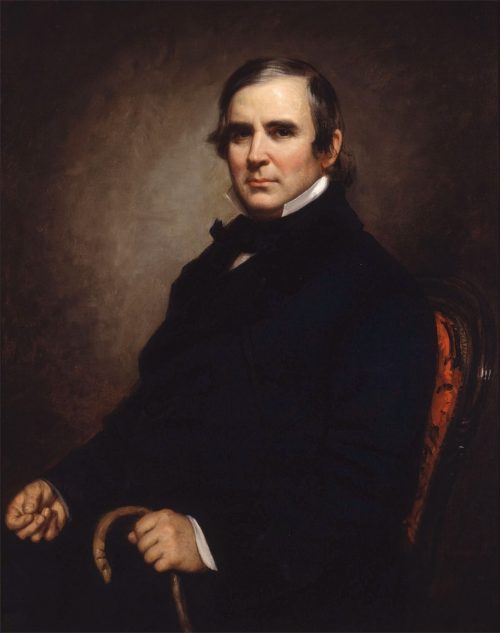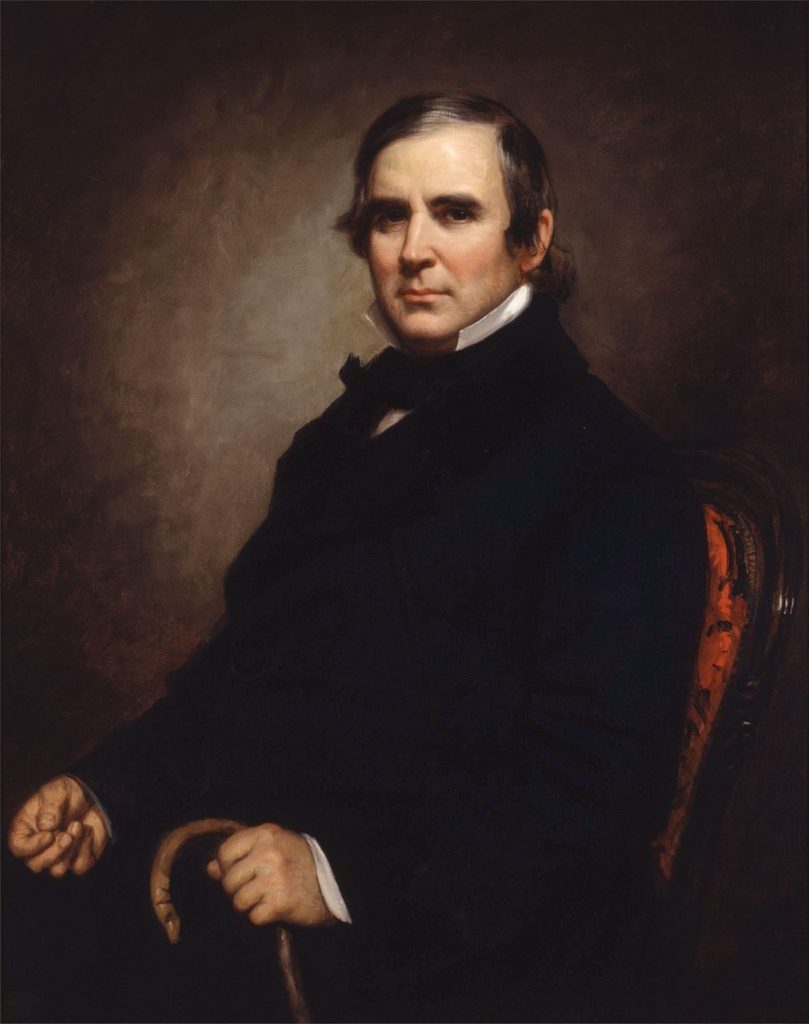
William Butler Ogden, Chicago’s Founding Father.
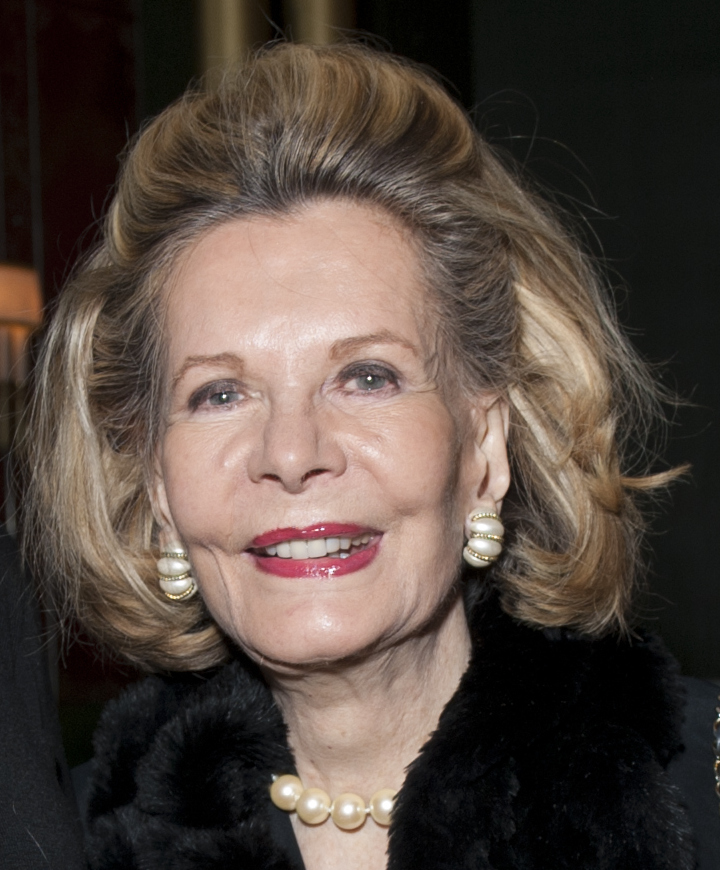
By Megan McKinney
Founding was in the Ogden blood. The first American in the line was John Ogden, who arrived in the New World from Lancashire County, England in 1641. John would not only become “the leading founder” of the English colonization of New Jersey, one of the original 13 colonies, but he also would found “the storied commercial whaling industry in America”. However, this Ogden—known as “the Pilgrim”–was by trade a stonemason, who had traveled to New Amsterdam for the purpose of building the stone St. Nicholas Dutch Reformed Church at the southern tip of Manhattan, completed the following year.

Also known as the Church in the Fort, John Ogden’s church was constructed inside Fort Amsterdam near today’s Battery as protection from attack.
Although John’s 19th century descendant, William Butler Ogden, came as close as any man to being father of Chicago, the city was never in his plan. Few lives go exactly as anticipated; however William may have flown too boldly in the face of fate in designing his future.
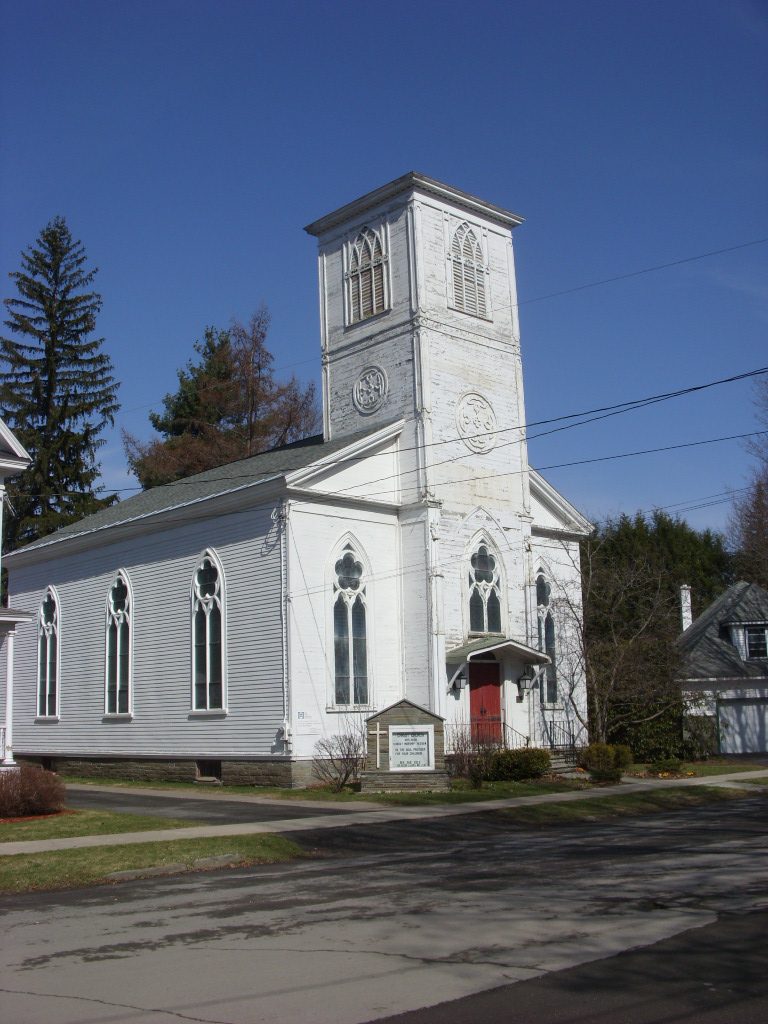 The exterior of Christ Episcopal Church in Walton, New York, has changed little since William Ogden’s time.
The exterior of Christ Episcopal Church in Walton, New York, has changed little since William Ogden’s time.
He was born, 1805, in the town of Walton in New York’s Delaware County and had reached the age of 30 when Chicago beckoned. Then a member of the New York State Assembly, he had been hand-picked for the office by then United States Vice President Martin Van Buren.
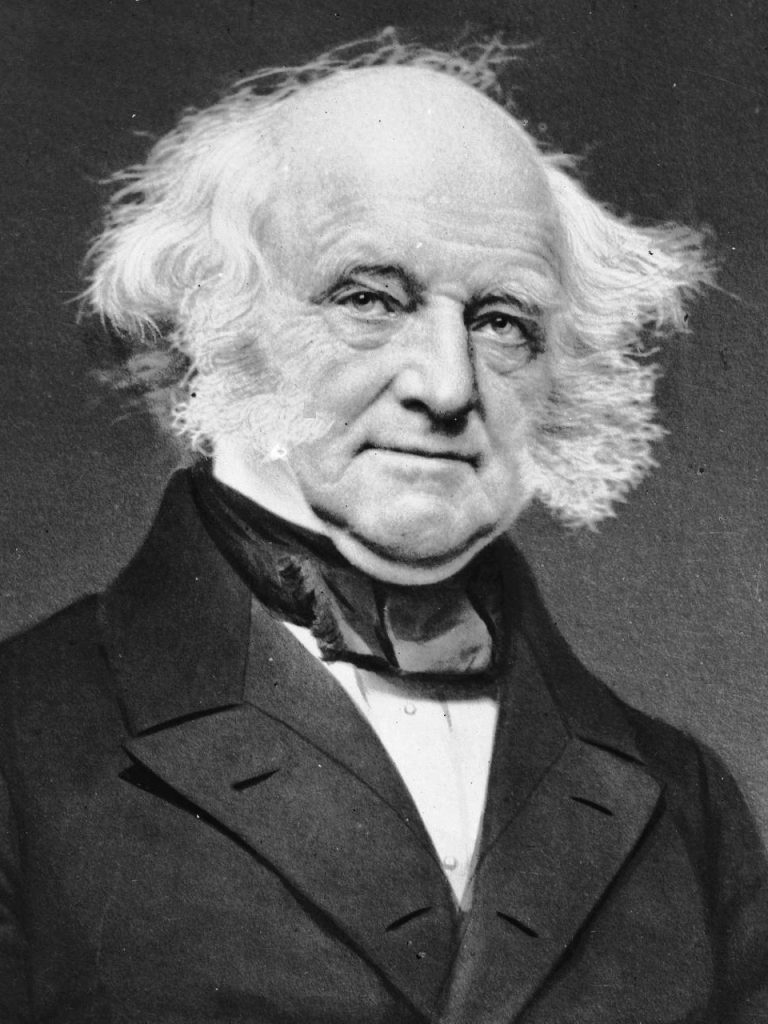
Future President Martin Van Buren.
William had begun planning his future as a little boy when he fell in love with a Walton neighbor, Sarah North, the beautiful child of one of the town founders. For years the youngsters spent their free time together, playing on the muddy banks of the Delaware River, riding horseback through nearby fields to the base of nearby Mt. Holly and–as they grew older—sitting and talking quietly, planning a future. They always assumed, as did everyone around them, that they would one day marry.
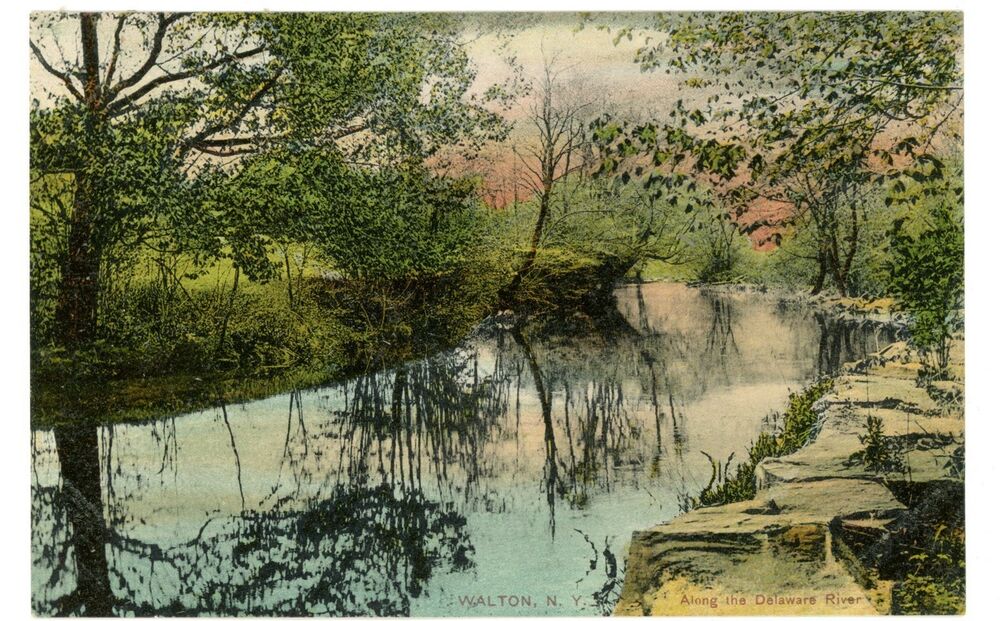
A postcard image of the idyllic Delaware River at Walton, New York. This portion of the riverbank was a peaceful stretch for dreamily planning a future together.
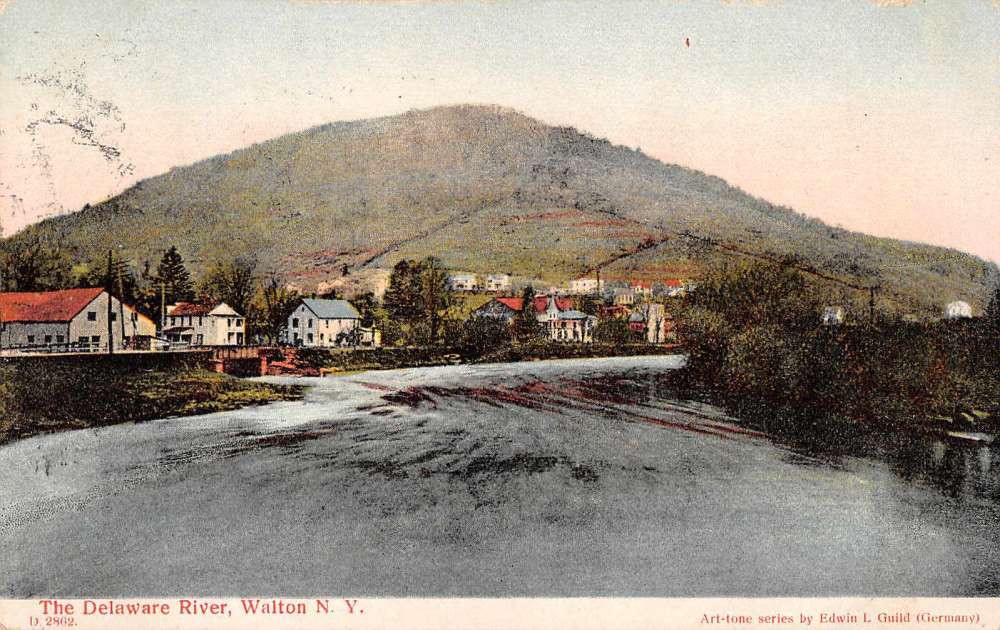
Another vintage image of the placid river with Walton in the foreground and Mt. Holly in the distance.
Part of William’s plan was that he would become a lawyer; however when he was 16, his father, Abraham, suffered a devastating stroke, destroying his ability to continue operating the lumber and woolen mills he had successfully established. It also shattered the boy’s dream of a career in law. Instead, as the oldest Ogden son, he was placed in charge of running the mills.
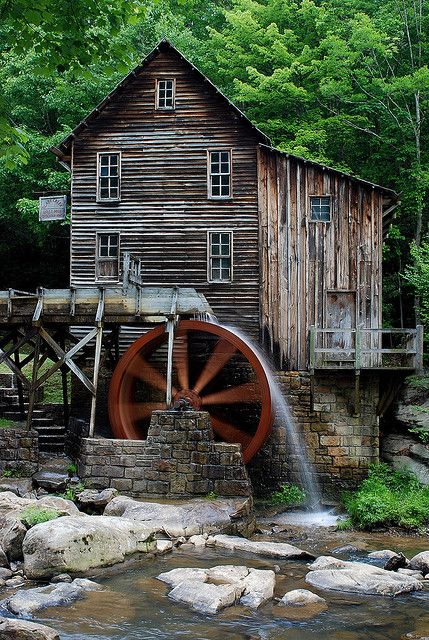
A vintage woolen mill.
William accepted the challenge well, the mills prospered and plans progressed toward his marriage to Sarah. They set a date for June 1829, when William would be turning 24.
The day of the wedding was approaching, with William on a business trip to Philadelphia, when Sarah caught a severe cold and soon became dangerously ill with what was believed to be pneumonia, or even tuberculosis, the disease from which two of her brothers had died.
Before he could return home, William was surprised by the horseback arrival of his brother Mahlon with the tragic news of Sarah’s sudden death.
It was a shock from which William would never completely recover. He didn’t marry until nearing his 70th birthday, very old age in 1875 and only two years before his death.
Yet, in 1829, with nearly a half century left to live, the life of William B. Ogden had much drama and achievement ahead. Without Sarah, his personal life would be enriched by increasing closeness to his biological family and warm friendships with some of the most stimulating men and women of his time.
He would build a real estate empire, pioneer several industries and come as close as any man to being Chicago’s founding father.
Next in this series of Megan McKinney’s Classic Chicago Dynasties is a continuation of the story of the pioneer who became the city’s first mayor and a great deal more.
Author Photo:
Robert F. Carl



